Field Sales: The Ultimate Guide to Success in 2023 (Updated)
Photo from Unsplash
Originally Posted On: https://veloxy.io/field-sales-guide/
Since 2015, we’ve grown field sales productivity by 200% for hundreds of sales teams.
What’s our secret? Field Enablement.
We’ve been using this same field sales strategy for the past seven years, and it crushes quota.
In our ultimate guide (the largest in the industry), you’ll learn everything you need to know to achieve similar results. Plus, we’ll tell you where you can find the right job and how to overcome lingering Covid restrictions.
The Ultimate Guide to Field Sales
- What is Field Sales and Why is it Still Important?
- 6 Steps to Becoming the Best Field Salesperson in 2023
- 5 Must Have Field Sales Technologies
- Top 3 Field Sales Challenges
- 7 In-Demand Field Sales Capabilities
- Why Field Sales Reps should be Optimistic in 2023
- High-Paying Field Sales Jobs & Top Paying Industries
- Field Sales vs Outside Sales: Is there a Difference?
- Field Sales vs Inside Sales: What’s the Difference?
- Covid’s Lasting Impact on Field Sales?
What is Field Sales?
Field sales is the selling strategy that prioritizes the creation and nurturing of in-person customer relationships. Sales managers typically assign field salespeople to specific territories, such as cities and states. In some instances, field salespeople can also be assigned accounts based on industry experience and company size.
Why is Field Sales Still Important?
The customer experience is one of the biggest reasons field sales is still critical in today’s virtually connected world. As a matter of fact, the Customer Experience has been the number one sales KPI (key performance indicator) for the past four years.
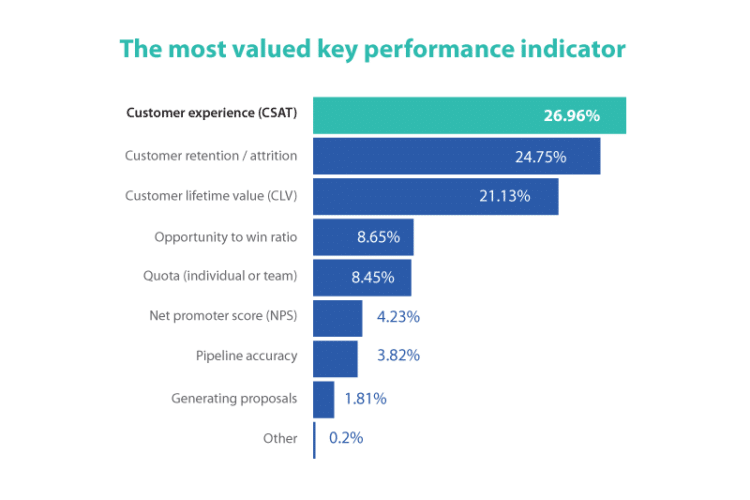
The customer experience is one of the biggest reasons field sales is still critical in today’s virtually connected world. As a matter of fact, the Customer Experience has been the number one sales KPI (key performance indicator) for the past four years.
With the seemingly infinite number of product choices and marketing communications today, the customer has taken the reigns in dictating their buyer’s journey. In doing so, they have demanded more personalization from the seller, most notably field sales reps.
Today’s field salesperson has responded by evolving their reputation from a door-to-door salesman to a value-added consultant. Proactively visiting customers to better diagnose their needs without asking for anything in return has been one strategy that has helped field sales reps close more deals than ever before.
Watch our “State of Field Sales Webinar” to learn more:
6 Steps to Becoming the Best Field Salesperson in 2023
Covid. Influence of Inside Sales. Rising, ever-evolving customer expectations.
What are you to do as a field sales professional? Don’t fret! We have listed the top five steps to becoming the best field salesperson in 2023 and beyond.
1. Use AI Sales Assistant Software
2. Leverage Change as a Competitive Advantage
3. Never Stop Listening to Your Customers
4. Receive Actionable Company Intelligence Every Day
5. See Rejection as an Opportunity to Relate to Customers
6. Spend More Time on these 5 Selling Activities
1. Use AI Sales Assistant Software
Imagine for a second that you could save over 1,000 hours every single year by hiring a robot. You would only have to pay this robot around fifty dollars a month. The robot would do all of your data entry, admin work, and lead prioritization without ever taking a break.
Sounds too good to be true?
It isn’t. AI sales assistants have been growing in popularity among field salespeople the last seven years. Companies such as Comcast, T-Mobile, and Tommy Hilfiger have kept their field teams on task with the deployment of this technology.
In addition to eliminating non-selling activity, especially those tasks associated with CRMs like Salesforce, field salespeople have never been more efficient and productive.
Even better is the fact that most meet or exceed their sales quota every quarter based on the AI sales assistant’s progressive analysis of each contacts’ propensity to buy. You could say that this app, which you can use on all of your devices, is your secret crystal ball to more revenue!
2. Leverage Change as a Competitive Advantage
There’s so much change in your profession that you may feel lost or flustered. Here’s a cold hard fact. If you’re feeling that way as a field rep, chances are most other sales pros are feeling that way, too.
If most field salespeople are discouraged by using Zoom calls and sales engagement software, pivot, train yourself up on how to become a top 1% user, and you’ll quickly forget about the negative feelings associated with past changes.
You and I have heard of the famous saying, “stuck in your old ways.” In almost any discipline, you have to progress where others stay the same or regress. This won’t just be self-evident to you, but others including your colleagues and customers will quickly take notice in a positive way.
There’s more to change in field sales than virtual calls and sending outreach emails. Check your thought leader subscriptions and LinkedIn feed for what the top 1% is doing, become an early adopter at your company, and grow your influence as a high-performing best-practice sales rep.
3. Never Stop Listening to Your Customers
As I shared earlier, a high-performing field sales rep has to prioritize the customer experience above all else. Yes, even sales quota!
You’re a natural salesperson. People are drawn to you when you enter a room. It’s only natural that you miss that experience. But it’s even more natural that your customers miss that experience just as much as you.
Your customers miss seeing you in person, and they’re apt to miss your unique traits, such as a great smile or a sense of humor. More importantly, they also miss you solving their biggest problems.
If you can’t stop-in or visit their office, be sure to take the initiative and schedule an impromptu Zoom call. Don’t initially ask for their preferred day and time, let them control that if your virtual call doesn’t fit their calendar. Trust me, they’ll appreciate you sending the invite.
Your customers are just as bottled up as you are, stuck indoors without the usual water cool daily office interaction. While you can’t have a Zoom meeting with them everyday, they’re apt to get their communication fix from social media. So if you’re not following what they’re posting on LinkedIn or Twitter, be sure to do so. It’ll help you acquire new sales intelligence.
4. Receive Actionable Company Intelligence Every Day
Did you know that your hottest lead just received a promotion?
Do you think it would work in your favor to reach out to them with a quick congratulatory email or phone call?
Of course it would!
Business Intelligence tools such as ZoomInfo and Lead411 are constantly aggregating fresh and relevant company and personnel insights. From promotions to job postings, venture capital to mergers and acquisitions, you can’t afford competing field reps discovering this information first.
You can create templated email campaigns for each of the aforementioned alert types. This will help you stay hyper-efficient with your outreach efforts. Receive an alert, spend one minute personalizing the campaign, click send. Your targets will appreciate the effort. This is the level and type of personalization they’re looking for from salespeople
Don’t forget to incorporate company intelligence with Veloxy buyer signals!
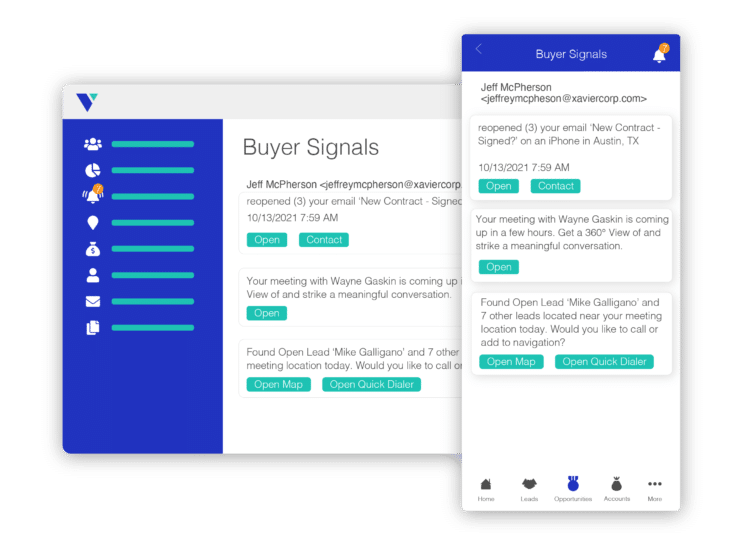
5. See Rejection as an Opportunity to Relate with Customers
How many times have you heard this in the past two years, “I’M NOT INTERESTED!”
Yes, I’m referring to the all capital letters, blunt replies to your phone or email introductions. Years ago, this would initiate a quick unsubscribe, opt-out, and don’t call again recording in your CRM. Not to mention a possible sigh from you.
Not any more. People have taken an overwhelming emotional toll since the start of Covid. They may have lost a family member or friend, or the economy took an unexpected turn on their job or financial situation.
As Pope Francis once said, “We have to meet people where they are.” He didn’t say this in response to Covid, but the truth of the saying resonates strongly with people the past two years.
Next time a prospect or customer rejects you over the phone, email, or in person, thank them for their time and get “honestly and empathetically creative”.
What do I mean by that? After a few days, send them a $5 Starbucks gift card. Yes, I’m being serious. If you don’t want to email it to them, send it via Starbucks’ website with a friendly note wishing them well and you hope to connect with them again sometime in the future.
You will be surprised how many positive replies you will receive, especially from the ones who don’t drink coffee or tea. It’s the thought that counts, and honestly communicating compassion and empathy during these times goes a long way to building lasting customer relationships.
6. Spend More Time on these 5 Selling Activities
If you haven’t downloaded our State of Field Sales Report yet, you’re going to want to after reading this finding.
After questioning over 500 salespeople, we found five selling activities that dominated the daily lives of field reps. While the top two activities are customer-facing and selling-oriented, the remaining three are directly tied to field reps’ demands for inside and outside sales tech stack additions.
Here are the five most trending sales activities:
Improving Reach in Accounts
ZoomInfo, formerly DiscoverOrg, is a cornerstone application for any enterprise using account based selling. Targeting one or two contacts per account just doesn’t cut it anymore.
You need to be perceived as a value based consultant from the top to the bottom of the Org Chart. Take our Revenue Director’s advice when he was interviewed prior to our webinar.
Meeting Customers in Person
Field reps had a hard time adjusting to Zoom calls and Google Hangouts due to Covid travel restrictions. Their morale, and individual and team quota was at an all-time low.
Let’s not forget the customer here. There is a misconception that buyers don’t want to be bothered by salespeople. The exact opposite is true. With the rise in CX as the number one KPI, customers want to meet with field reps face to face.
Today, salespeople are prioritizing meeting customers in person more than they had pre-Covid. And they’re not just traveling to pitch and sell. They’re going to perform assessments, meet new contacts, and leave a lasting impression.
Researching Competitive Activity
Salespeople make a common mistake when they use ZoomInfo and Lead411 exclusively for prospect discovery and account intelligence. It should also be used for competitive analysis—especially when you know the companies vying for the same contract.
Review sites are also a great place to research competitors. You can find detailed one to three star reviews on the following websites, reminding the buyer of the risks of not choosing your solution:
Discovering New Prospects
Another alternative to the traditional uses of ZoomInfo and Lead411 is to use a Geolocation App to discover new prospects.
When you’re selling on the road, driving from one presentation to the next, you’re driving by dozens, if not hundreds, of companies that fit your ideal customer profile. Listen to what our cofounder, Sauvik Sarkar has to say about this:
Reviewing / Optimizing Pipeline
When field pros told us that they spent much of their time reviewing and optimizing pipeline, we asked them, “Are you doing it manually, or are you using Sales AI?”
The average response we got back was a three second silent pause, followed by, “How does Sales AI help with my pipeline?” That’s music to our ears!
Sales artificial intelligence is analyzing your pipeline’s history and activity 24 hours a day, 7 days a week, and 365 days a year. It’s constantly finding data driven insights to optimize your pipeline by each individual contact’s likeliness to respond and or buy.
Now—that’s music to YOUR ears!
5 Must Have Field Sales Technologies You Need
Take a look at this photo and let me know in under 2 minutes what your ideal sales technology stack looks like for a field sales pro.
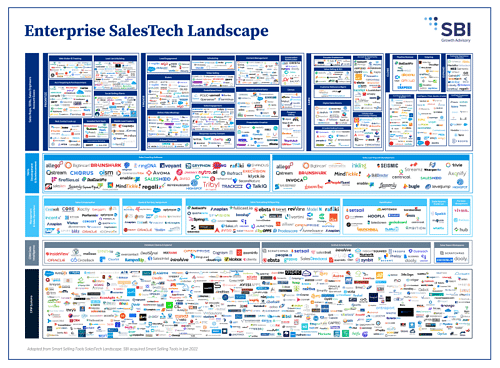
If you’re squinting your eyes and exclaiming to me, “Samir, I can’t read all of these logos!”, then you’re experiencing the problem every sales leader has been battling the past ten years.
Far too many sales orgs have over-invested in their sales technology stacks. We’ve worked with companies who have had over 25 sales solutions deployed to their team. Unused software is a huge cost sink, so be sure you focus on a sales tech stack size of 5, at most 10.
Below, you’ll find an optimized field sales technology stack. Be sure you trial and demo before you make any commitment. These tools were handpicked to maximize your productivity and quota crushing capabilities:
1. AI Sales Assistant Software
2. B2B Sales Intelligence
3. Route Planner for Field Sales
4. Advanced Scheduling Software
5. Wireless Charging Devices
Be sure to grab the Enterprise SalesTech Landscape (as shown above) on SBI’s website.
1. AI Sales Assistant Software
As I mentioned earlier in the 5 Steps to Becoming the Best Field Salesperson in 2022, AI Sales Assistants are an absolute necessity to succeed.
It’s more than success and exceeding quota. It’s also having an actual life outside of your work. When not enabled with an AI Sales Assistant, field sales reps spend valuable work hours, and worst nights and weekends, sifting through spreadsheets, business cards, and notes.

No high-performing field sales pro enjoys non-selling activity. Thanks to the advancement of artificial intelligence, and its integration with other sales tools such as CRM and smartphones, non-selling (aka non-productive and non-revenue-generating) activity can be automated.
In addition to freeing up hundreds of hours that you can now spend with customers, AI Sales Assistant Software can help improve the following tasks with no extra effort:
- Lead qualification
- Sales forecasting
- Email and phone outreach
- Pipeline management
After speaking with seasoned field reps, the number one benefit this tool delivers is the extension of its features, and that of their CRM, to their smartphones, tablets, and anywhere they have internet access. This further factors into their sales productivity enhancement.
Here are two of the most popular AI Sales Assistants:
1. Veloxy
Our AI Sales Assistant software was built exclusively for the most powerful CRM, Salesforce.
In addition to being a full-feature AI solution with sales engagement and pipeline management, Veloxy maximizes Salesforce adoption for field sales teams. CRM adoption is often a pain point for sales leaders, however, with Veloxy sales leaders have predictably proven the ROI of Salesforce and scaled their field sales team in less than a year.
“Veloxy is the application every sales hunter should be using. Highly recommend!!!”
John Lengyel, Comcast Business
2. Saleswhale
This AI sales assistant helps automate and proactively manage email outreach. Imagine for a moment that you send out a cold email campaign, and half of the prospects do not open or reply to your email. Saleswhale will automatically follow up with them on your behalf as many times as you deem necessary.
“Automatic lead nurturing that saves time on mundane emails.”
Administrator in Information Technology and Services
2. B2B Sales Intelligence
Back in the 5 Steps to Becoming the Best Field Salesperson in 2022, I shared why instant alerts on company intelligence are more valuable today than ever before.
If you’re tasked with business development in the field, you’re going to want to demonstrate to potential customers that you have a stake in their success. What better way than to personalize your communication with information that only an insider would know.
B2B Sales Intelligence is much more than company alerts. Field sales reps also leverage intelligence tools for the following:
- Lead qualification
- Prospect discovery
- Improve CRM data quality
- Org chart generation
When asked for their favorite Sales Intelligence benefit, our friendly field rep clients shared that having a centralized view of actionable, realtime company news helps start more meaningful conversations before, during, and after meetings. This not only helps with their status as a value-based consultant, but it also helps shorten the sales cycle.
Here are two of the most popular Sales Intelligence platforms:
1. Lead 411
While their whopping 450 million contacts is on a global scale, Lead411’s contact and company database offers field sales reps the most comprehensive intelligence platform, with more industries and company sizes than any other.
Due to our remote selling world where buyers and decision makers are working from home, Lead411 has been able to discover and verify mobile phone numbers at a fantastic rate. Field reps are finding this just as, if not more valuable than verified email addresses.
“Lead411 – Value, Value. Best tool to get the information you need for prospects at a reasonable CPL.”
Brian Fleming, Director of Sales & Business Development
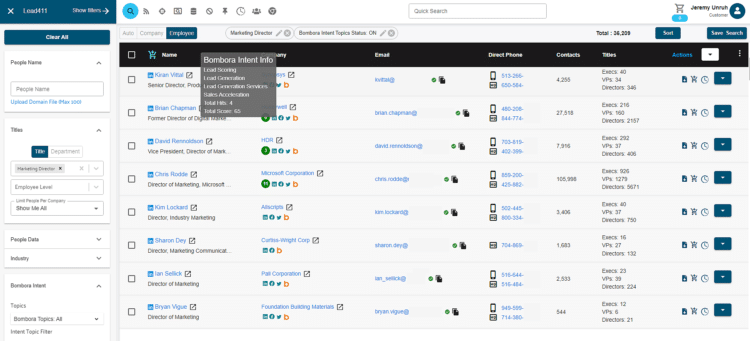
2. ZoomInfo
It’s amazing how much ZoomInfo has evolved over the years. One of the original B2B contact databases from the 2000’s, they have evolved into a business intelligence platform.
ZoomInfo now complements their contact and company database with territory planning, lead scoring, and outreach features. While this acts as more of a benefit to inside sales teams, field sales teams and managers can leverage these features as well.
“Multi faceted platform which helps you get things done.”
Vani Koppula
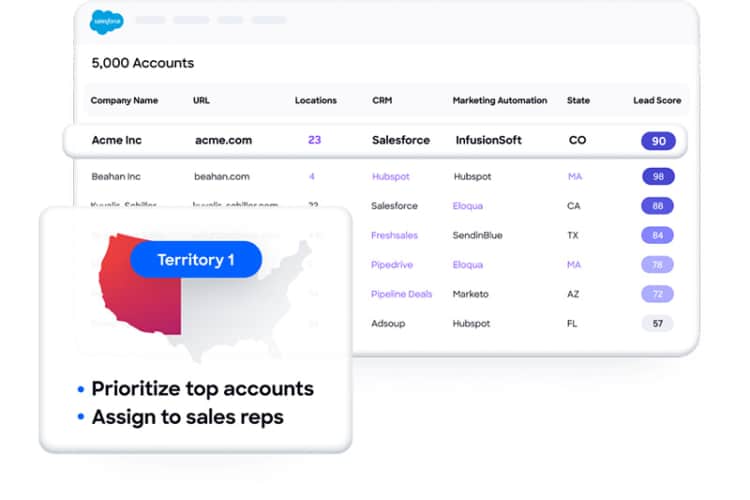
3. Route Planner for Field Sales
I’ve heard from some field sales pros that AI Assistants and B2B Intelligence databases are luxuries more than necessities. While there may be a grain of truth to that, the one solution that these same field sales reps can not live without is Route Planning Software.
Gone are the days of printing trip tiks and mapquest instructions. More field sales reps are pivoting from paper and even their smartphone’s GPS navigation apps to a Route Planning app.
Tightly integrated with your CRM of choice and extended to your mobile phone, Route Planners help you find the most efficient route to and from meetings. Most importantly, these apps will make sure that you pass by an optimal number of leads and contacts so you can increase the number of “stop ins” on a daily basis.
Route Planning Software can sometimes overlap with Field Sales Software (of course), and both share similar benefits that can help you improve productivity in the field:
- Discover new prospects in your surrounding area
- Location-specific account intelligence
- Public and private parking locator
- Collaborate with deliveries and other personnel
I reached out to some of the greatest road warrior clients we have at Veloxy to discover their favorite Route Planning features. It was a close tie for second between optimized quotes and lead finding, however, location-specific account intelligence was the clear favorite. This not only helps with stop ins, but it better prepares field reps for before meetings.
Here are two of the most popular Route Planning platforms:
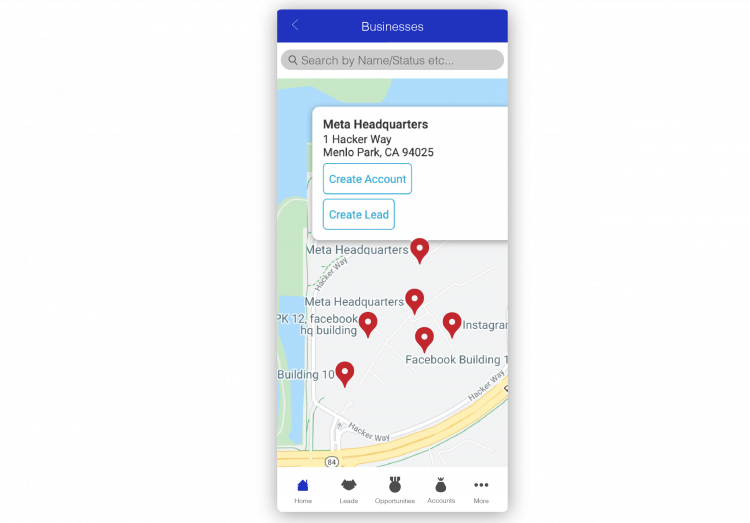
1. Veloxy
We can only rank for six categories on G2, so we chose Field Sales over Route Planning, even though they’re somewhat interchangeable. I chose to do this because Field Salespeople are the people we serve with route planning, whereas some more exclusive route planning apps are used by professions such as transportation and distribution.
Veloxy’s Route Planning features were designed with Field Sales representatives in mind. With countless hours of user research, we optimized our app to help field reps arrive early, park in the most convenient lot, be one click away from centralized business intelligence, download new prospects in your surrounding area, and maximize stop ins to prospects, leads, and customers.
2. LeadSquared
If you’re not using Salesforce to manage customer relationships, the next best tool you could deploy to your field sales team is LeadSquared. This is an all-in-one field sales software that offers both CRM and route planning capabilities.
For field sales teams that have multiple active reps across the same territory, LeadSquared empowers sales managers to assign new prospects based on territory or based on proximity to accelerate the sales process. The only drawback we’ve heard from field reps is that managers tend to micromanage with the device tracking capabilities.
“A good CRM to have when you have a big field sales team.”
Akshay Mahanti
4. Advanced Scheduling Software
When speaking with field reps about advanced scheduling software, I always hear, “How advanced can scheduling software get?” They’re amazed when I tell them about instant handoff that improves collaboration with inside sales, and one screen – one click scheduling.
There’s over 50 scheduling solutions to choose from, and each has its own unique features that can include but are not limited to:
- Supporting email campaigns
- Payment processing
- Calendar, CRM, and email integrations
- Website and mobile applications
Gone are the days when you could exchange a few emails or play phone tag to agree on a meeting time. With each passing year, professionals are becoming more digitally connected, and that means they want a virtual experience with you. Controlling when they choose to make time on their calendar for you is one of the growing trends of this generation.
Choose to adapt by choosing the best advanced scheduling software. Here’s a tip! Demo a few scheduling softwares and send a link to both to a few of your loyal customers. Ask them which one they prefer and why. It’s the best way to choose a calendar solution.
Here are two of our favorite scheduling solutions at Veloxy:
1. Chili Piper
We’re big fans of Chili Piper. We shared the benefits of their software in our Sales Acceleration guide. They put the ‘Advanced’ in advanced scheduling software.
Coupled with the two features that blew the hair back of some field reps at the beginning of this chapter, Chili Piper also helps your customers easily reschedule meetings. When the positive customer experience is two-fold—the user and the recipient—you really can’t lose.
And just in case your customers require one less step, you can embed unique days and times into the body of your email, so when your customer clicks it, they’re immediately scheduled on your calendar. There really isn’t much that Chili Piper hasn’t thought of yet.
“An instant boost in efficiency with our scheduling. ”
Kyle Garrett, Senior Marketing Operations Manager at Fishbowl
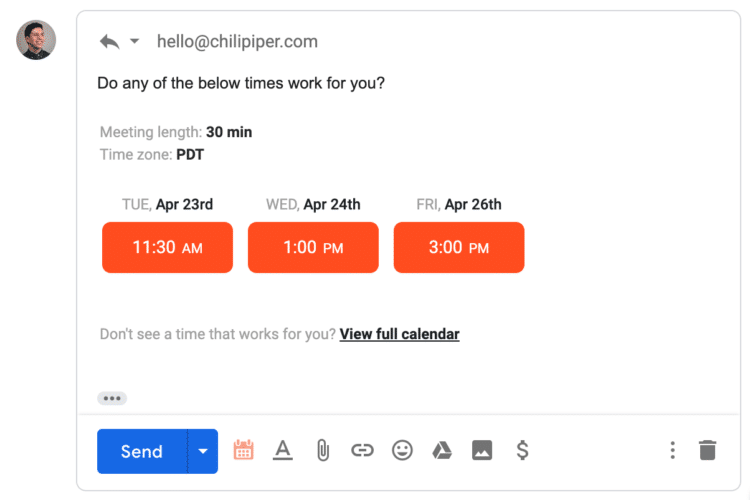
2. Calendly
Calendly isn’t in the far top right of the scheduling software G2 grid for nothing! Our very own Director of Revenue, Jeff Grice, is a happy Calendly user.
You may be wondering why they’re at the top of the grid. It partly has to do with the fact that they are used by more than 10 million people at over 50,000 companies across the globe.
They have similar robust collaboration capabilities and integrations as Chili Piper, but some sales managers point to Calendly’s enterprise-grade security and compliance as a huge benefit.
Calendly has a dedicated and passionate security team that has worked to limit access to and retention of resources and customer data. While we all focus on features that help us get the most conversions, Calendly reminds us to never forget the peace of mind delivered by security and compliance.
“The Best Online Calendar Booking Service to Improve Your Business.”
Carlin Wong, Management Consultant at Outstand
5. Wireless Charging Devices
While the previous four field sales technologies have dedicated G2 categories, wireless charging devices do not. If you talk to field sales people that have six to twelve sales applications on their smartphones, they’ll tell you charging devices needs a grid.
Field sales reps find themselves on devices around the clock. Smartphones, tablets, laptops. They’re draining batteries left and right, and sometimes accessibility to an outlet can be limited or nonexistent.
The smartphone is arguably the most import device to a field salesperson. They use it for route navigation, talking, texting, emailing, researching, and the list goes on. A field rep’s smartphone has to be charged at all times, and that’s why their use of wireless charging devices has been growing year-after-year.
Now that you’re excited about buying a wireless charger, the last thing you want to do is walk into your local Best Buy and find yourself staring at 17 options. Thankfully I’ve shared our field sales users’ favorite chargers below:
1. Best Universal Wireless Charger
When you’re a field sales pro and you have both apple and droid devices, you need a single charger to keep things cost efficient.
The Mophie Wireless Charging Pad works with iPhones, Google Pixel, and Samsung Galaxy. If you don’t see your device in this list, the Mophie charger will work for you just as long as it is Qi-enabled.
You can even leave your phone or tablet’s case on when charging—super convenient for sales reps on the go!
2. Best Wireless Charging for iPhone
Apple’s products are easy on the eyes. From solid white to solid black, they fit nicely into any work environment. The Apple MagSafe Charger is no exception.
This round and flat charger can ramp up your iPhone and AirPods in no time!
Probably the most surprising benefit of the MagSafe Charger is its price. At $39, it is easy on the wallet compared to other charging devices sold by Apple.
3. Best Wireless Charging for Samsung
Samsung’s Convertible Wireless Fast Charging Stand is perfect for field reps who spend most of their time traveling in a car.
The convertible stand can be situated on your dashboard and plugged into your car’s USB port. Using your favorite route planner and charging at the same time is music to any outside sales rep’s ears!
In addition to charging your phone, you can also use the charger for other Samsung devices, such as wearables and earbuds
Top 3 Field Sales Challenges
Field sales reps felt uncomfortably numb when business travel came to a halt during Covid.
Sales managers had reps pivot to a remote selling role by replacing in-person visits with virtual sales engagement. Fast forward to today, and some of the challenges are lingering around.
Here are the three biggest field sales challenges, as found in our State of Field Sales report:
1. Lower Response Rates
The average employee receives 121 emails every day, and it takes about 8 cold calls for them to pick up the phone.
In an era of advanced sales technology, engagement rates have started to wane and distrust of the tools has risen. If engagement rates are low, response rates are going to be lower.
How can field sales reps overcome this challenge?
ANSWER: It’s a combination of email tracking, buyer signals, and lead prioritization. All of these sales tech solutions predictably increase engagement and response rates because they coach sales reps on the day and time customers are most apt to engage and reply.
2. Longer sales cycles
If you’re having trouble reaching your ideal customer, rest assured your sales cycle is long and tiring. How can you shorten it, let alone accelerate it, without better response rates?
ANSWER: Luckily for you the same solutions that lower response rates also shorten and accelerate sales cycles. When customers have the perception that engagement rates are personalized to their liking, they’re more likely to trust you, thereby improving the customer experience.
3. Fewer sales qualified leads
When salespeople are short on SQLs, they’ll typically look to marketing for more MQLs or they’ll browse LinkedIn Sales Navigator or ZoomInfo.
Let’s turn our attention to the Customer Experience again.
If you’re not answering these questions when engaging with prospective customers, you’ll always be short on SQLs:
- Do their needs fit our solution?
- Are they looking to replace their current solution, or are they new to the market?
- Is the decision maker involved?
- Is your contact ready to buy?
If you can answer “Yes.” to all four questions, that’s a solid sales qualified lead!
7 In-Demand Field Sales Capabilities
There was another eye-opening finding from our State of Field Sales research. With salespeople locked in doors, high-performing sales teams complemented new sales tech with new sales capabilities.
This not only benefited individual reps but the sales team as a whole. As you already know, the ‘Customer Experience’ has been the most developed capability since Covid. However, a surprising skill finished in second place—Continual Improvement.
Sales leaders saw the renewed focus on developing and nurturing capabilities as a long game, as they should. Team and morale building should never be overlooked.
Here are the eight in-demand sales capabilities today:
1. Customer Experience
CX came in as the most sought after sales capability for driving field sales performance in 2023.
The amazing thing about this was that it was an open-ended survey question. Over 15% of survey responders, 77 to be exact, entered ‘Customer Experience’.
This was right around the time that Covid restrictions were being lifted. Talk about a clear indicator that sales leadership knew they had to make up for lost time in the field.
2. Continual Improvement
Continual improvement has always been a popular principle in operations and manufacturing.
The sales leaders we were speaking with shared how reps were feeling “stale” after awhile due to a lack of training and attention. High performing sales teams are taking the lead to make sure their team and office is “fresher” than the competition.
Here is a great read from Lean Sales Method on how you can kickstart your continual improvement framework!
3. Consultative Selling / Service
If there’s one thing that hasn’t changed since Salesforce’s third State of Sales report, it’s that customers want a value-driven consultative buying experience.
Gone are the days of successful pushy salespeople. The future salesperson leads with problem solving, troubleshooting, and relationship building.
Trust is the name of the game. The more you can get a customer to not just trust you, but to like you as a friend, you will win more deals than you lose.
4. Communication Skills
One of the oldest capabilities known to man—verbal and written communication skills. Yet, sales managers are still finding room for improvement when observing their inside and outside sales teams.
This should be a huge reminder to salespeople to always list and demonstrate communication skills on resumes. It may seem outdated, or you may think it will blend in with other basic skills like Microsoft Office or Salesforce. Disregard the assumptions and continue honing your presentations and email writing.
Here are two helpful resources:
- TED Talk – Nancy Duarte on the structure of great communicators
- Grammarly – 7 ways you can become a better writer
5. Data-Driven Decision Making
What do spreadsheets, your gut, and the alphabet have in common? They’re all archaic ways to prioritize leads.
It’s 2023, and high-performing sales teams are using data to improve their decision making. Salespeople are using data driven insights to determine a buyer’s likelihood to buy, and sales leaders are likewise using them to create predictable forecasts.
But not all data driven decision making is automated by sales software. If you’re looking to better understand data analysis in sales, check out this edX course on Sales Enablement & Analytics.
6. Sales Artificial Intelligence
It wasn’t a surprise to us to find out that the same people looking to improve Data-Driven Decision Making were also investing time in Sales AI.
Nothing accelerates decision making more than automated, intelligent data analysis. When you can analyze your CRM with realtime sales-centric algorithms, you acquire the ability to reach and satisfy your customers before the competition.
The other great benefit to Sales AI is that it’s a hands-off tool. It works 24-7-365 so you can hit more homeruns and strike out less.
7. Social Selling
LinkedIn Sales Navigator is used by sales teams at over 5,000 companies. Why? Well there’s several key reasons:
- it’s common for sales reps to achieve a 15% InMail response rate
- you can acquire unique sales intelligence by analyzing profiles and feeds
- social media adds a strategic component to automated phone/email sequences
- you are able to present higher levels of credibility and trust to customers
Why Field Reps should be Optimistic in 2023
When you were a kid, did your parents ever take away your favorite toy for a prolonged period of time? Sure they did. Now do you remember the unbelievable sense of joy when you got the toy back?
This is similar to what customers experienced once travel restrictions were lifted. Salespeople and customers didn’t just smile and shake hands—they hugged it out!
What was once taken for granted is now being prioritized. More meetings are being kept instead of rescheduled or cancelled. Customers are valuing the presence and consultative approach of salespeople. And buyers are realizing the true competitive nature of the reciprocal relationship.
With all this optimism, field reps are now the ones who should not take their newfound prosperous outlook for granted. Instead, realize this is the nature of field sales that always should have been. Move forward without restraint and enjoy meeting and exceeding quota by being yourself!
What are some High-Paying Field Sales Jobs?
Lorem ipsum dolor sit amet, consectetur adipiscing elit. Ut elit tellus, luctus nec ullamcorper mattis, pulvinar dapibus leo.
Not all field sales jobs are created equal. As noted before, how customer segments are divided up amongst the sales reps is one unique factor. Others include jobs that require consistent travel and hotel stays, a remote or regional office, and sometimes technical skills such as engineering.
If you’re looking to raise your salary consider one of these three field sales roles:
1. Outside Sales Representative
This can seem like an entry level job title, however, with the right experience or credentials, you can find yourself as a Pharmaceutical, Consumer Packaged Goods, or Software Sales Representative, with an outside sales salary from $60,000 to over $100,000 per year.
2. Regional Sales Director
This is usually the next step up from being a successful outside sales representative. Regional Sales Directors will oversee larger accounts while also managing outside sales reps within their designated area. Directors usually carry a sales salary from $140,000 to around $200,000.
3. Sales Engineer
These roles are typically meant for professionals with a technical background. This may include having an engineering, mechanical, or other technical degree. In addition to selling products, Sales Engineers will likely diagnose problems and help in designing the solution. Sales engineers have one of the highest starting sales salaries at around $90k.
What are the Top Industries for Field Sales Jobs?
While your field sales position can dictate your salary, sometimes the industry you choose can also have an impact on how much you take home. It’s always good to keep your ear to the profession and overall trending business news. This is where you’ll discover the growing industries that are exceeding most others in average salary.
If you’re looking to raise your salary consider these as the best field sales industries:
1. Merchant Services
No one has to tell you that this is one of the fastest growing industries in the past five years. Your favorite coffee shop, clothing store, and cellphone retailer are all letting you swipe your card or phone at checkout, with little to no employee involvement. The rising demand and competition is helping this average field sales salary to range from $90,000 – $100,000.
2. Pharmaceuticals
This industry is never not on this list. For over 25 years, pharmaceutical sales jobs have been one of the most applied to positions across all job boards. The demand is generated by the earning potential, resume status, benefits and job security, and most importantly the ability to move up the corporate ladder. With field sales experience, you can expect to make anywhere between $50,000 to $90,000 (commissions not included).
3. Cyber Security
There’s two reasons why this is the third recommended industry. One, there’s a constant need and list of cyber threats that creates urgency from buyers. Second, the level of innovation that helps security systems differentiate themselves from competing products is very high. Both of these trends won’t go away anytime soon, nor will their $102,000 average outside sales rep salary.
Field Sales vs Outside Sales: Is There a Difference?
Field sales and outside sales are used interchangeably for the most part. There are two times when field sales and outside sales are distinguished from one another in job descriptions:
- Field salespeople will have a local office or headquarters to visit, report to, or work from, albeit not as often as inside salespeople.
- Outside salespeople will usually work from a home or virtual office space and typically serve both as a business development and account management role.
These are not hammered in stone, so be sure to ask hiring managers for specific responsibilities and requirements. Demonstrating that you know the slight differences can help you stand out from the other candidates.
Field Sales vs Inside Sales: Key Differences
The biggest difference between field sales and inside sales is where and how the salesperson engages with the customer.
Field sales is the strategy where salespeople meet with the customer in person, focusing on both business development and account management. While they may not participate in cold outreach due to collaboration with inside sales, field sales reps may cover the whole sales process in certain industries.
Inside sales is the strategy where salespeople engage with the customer from a remote location, focusing on lead generation and account management. Also referred to as SDRs (sales development representatives), inside sales professionals commonly qualify leads before passing them on to field sales.
While it’s not common that field sales and inside sales work from the same office, they do share a similar sales technology stack to improve collaboration. These tools include Salesforce or another CRM, a sales engagement platform, and sales intelligence resources.
Keep reading below for more on the blurred lines between field sales and inside sales.
The Blurred Lines Between Field Sales and Inside Sales
If there is one thing blurring the lines between field sales and inside sales, especially during Covid, it’s sales technology.
Inside sales has always dominated the technology footprint of sales orgs. CRM, dialers, email marketing, sales intelligence, list databases, artificial intelligence, you name it, they probably have it.
Today, field sales has had to replace in-person meetings, drop-ins, trade shows, and road trips with technological substitutes. Webinars, Zoom calls, virtual events, online demos, and even texting have caused friction and slower cycles.
Field sales venturing into inside sales has also had the reverse effect. Inside sales isn’t using field sales technology, rather they’re taking over more of a role in managing the whole pipeline, especially closing deals.
Inside sales technology isn’t the only other influence on field sales. eCommerce has reared its head in the past few years, allowing buyers to purchase directly online (yes, even expensive products). This has some sales thought leaders believing that field sales will experience an even greater pivot where they’ll be more or exclusively responsible for the customer experience, onboarding, and support.
Covid’s Impact on Field Sales
In today’s world of constant change, field sales reps had to pivot from meeting in-person to meeting virtually.
Outside salespeople thrive off the handshake and presence of other people, so moving exclusively to Zoom calls hurt their quota and morale. Many field salespeople observed that it felt as if they changed to an Inside Sales role.
Let’s dive deeper into the evolution of field sales to predict where we’ll be by 2025.
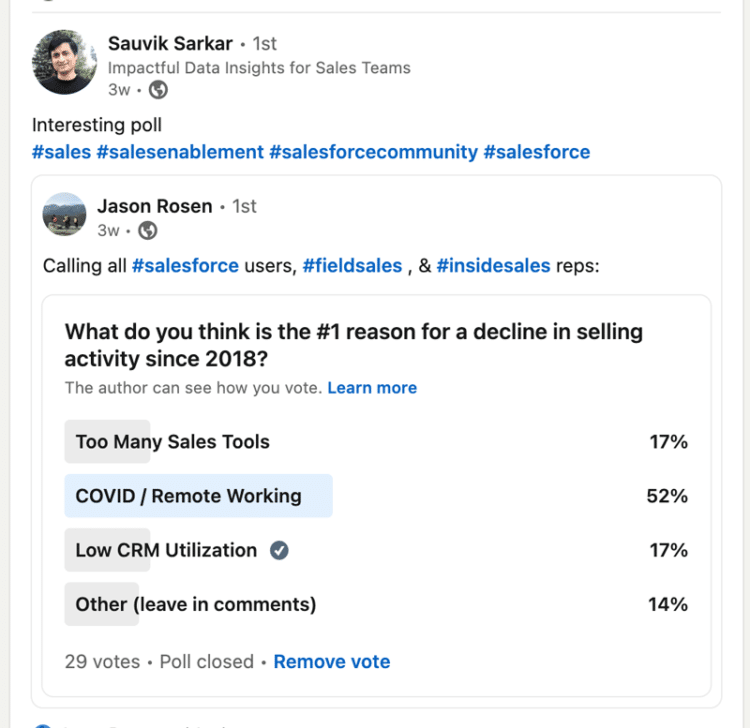
The Rise of Remote Selling in a Virtual Sales World
After field sales reps adapted to selling virtually from their home, things began to open up. It was a breath of fresh air, as salespeople started meeting customers in person again (masks included of course).
With Covid surges, depending on where salespeople reside, the frequency of in-person meetings has fluctuated from month-to-month. Without a clear path to a Covid-free world, field salespeople have begun to permanently adjust to a remote selling world.
It’s not just the salespeople who had their morale and work experience impacted by Covid. The customer has had to adjust to the increased use of virtual meetings, video phone calls, and email correspondence.
Covid came just when CX (the customer experience) took over as the number one key performance indicator for sales teams. Many high-performing selling organizations sustained CX performance by having sales collaborate heavily with customer service.
Field Sales Tips for a Successful Career
At Veloxy, we specialize in helping field salespeople be their most efficient, productive, and profitable self. So here are some other field sales tips for you.
If this blog post helped you today, I’d recommend you read our other key field sales blog post: 10 Outside Sales Gurus Share Their Secrets. It’s a favorite of our new users.
Furthermore, our Director of Revenue, Jeff Grice, offers 30 minute consultations to help you move the right numbers in the right direction. Be sure to connect with him on LinkedIn.
And be sure to at least demo the recommended field sales technology. We’ve vetted dozens of solutions to save you and your sales team time, so be sure to trial 5 of the solutions and take each one of them up on a personalized onboarding call.
Lastly, and most importantly, don’t expect to get all of this right out-of-the-gate. You’re a smart, driven professional already. Just take this advice step-by-step, and you’ll be sure to close out the year with more leads, more revenue, more happy customers, and a more satisfied life!
Venture forward my outside sales friend! The field is your oyster!
